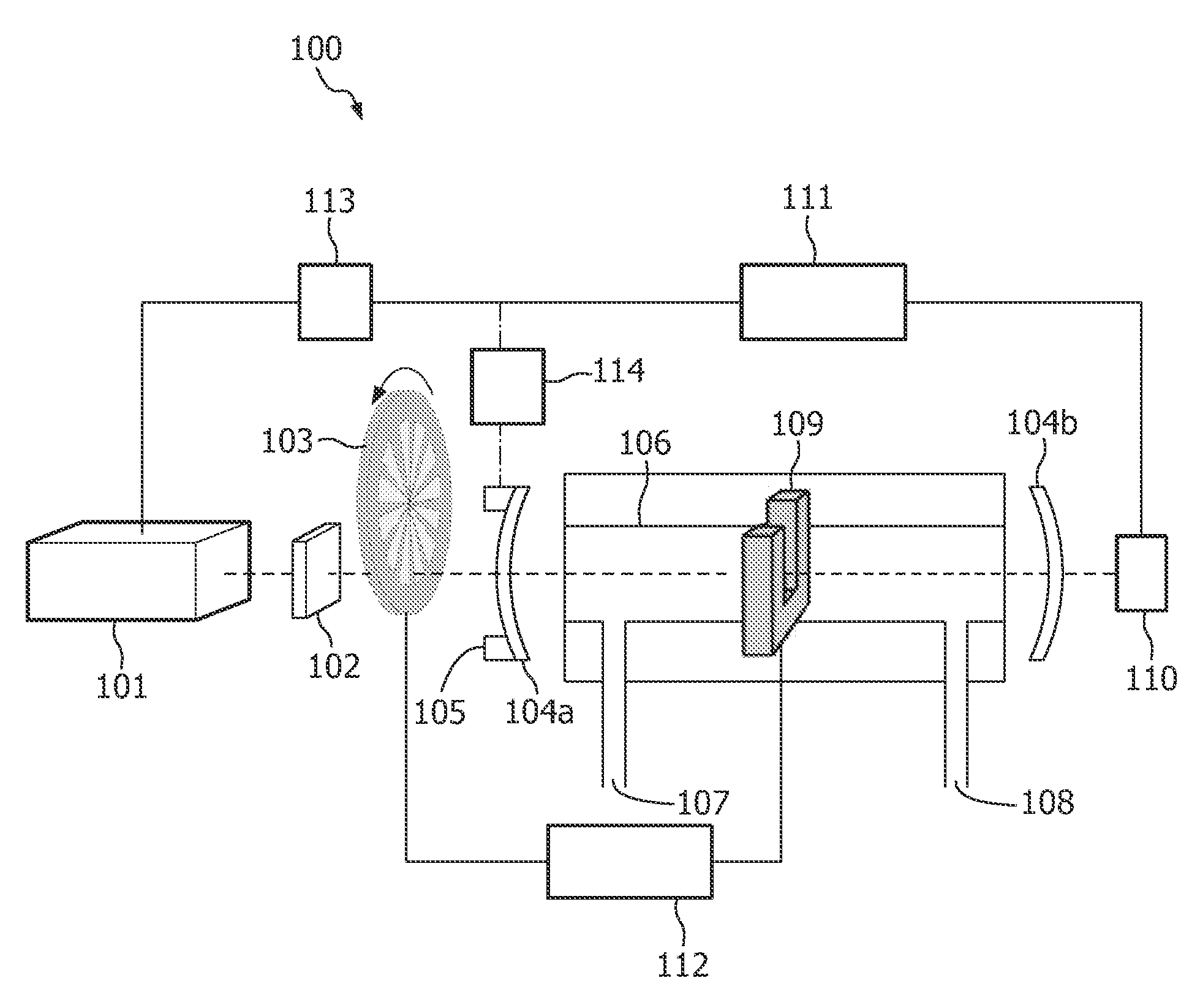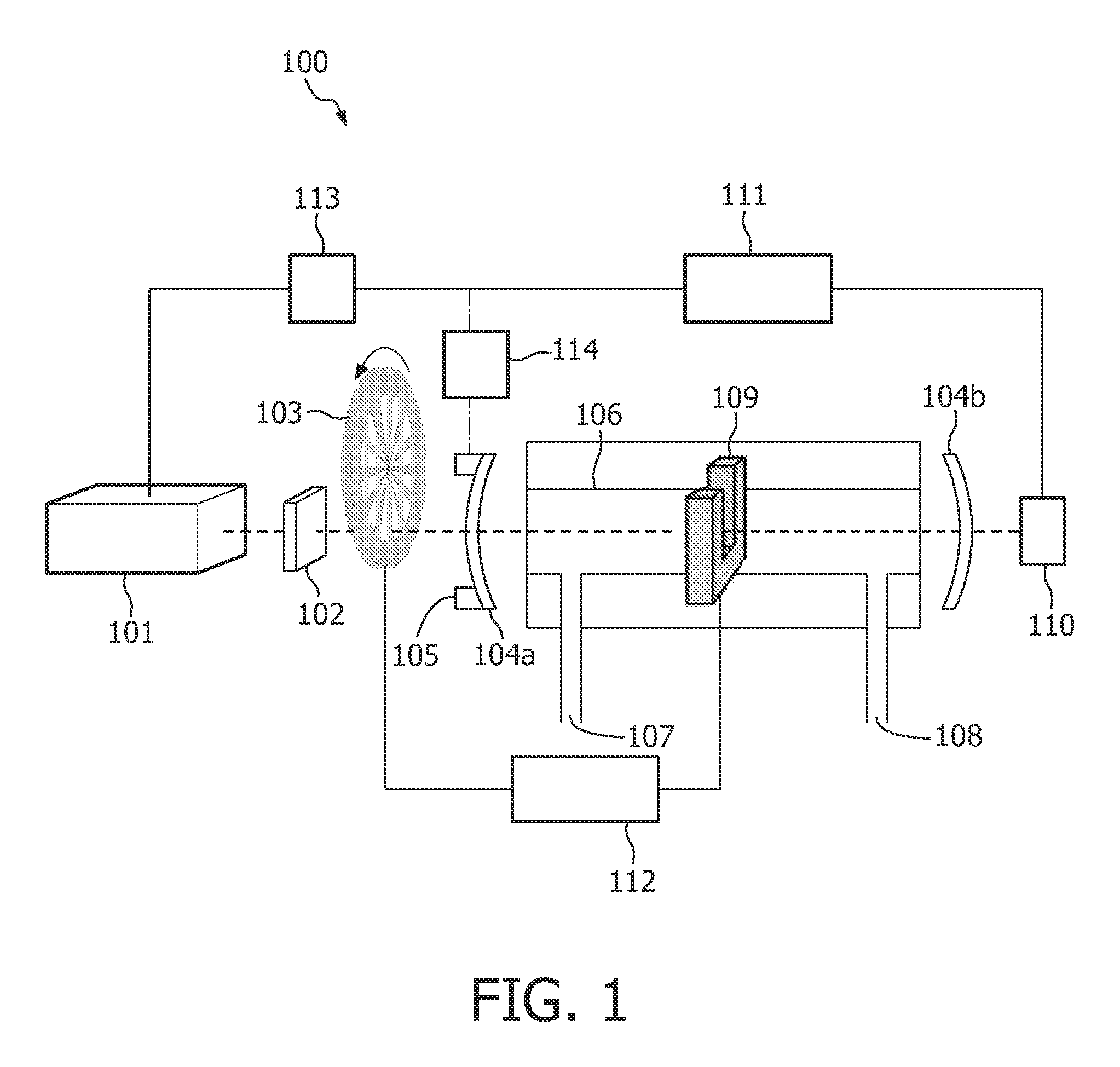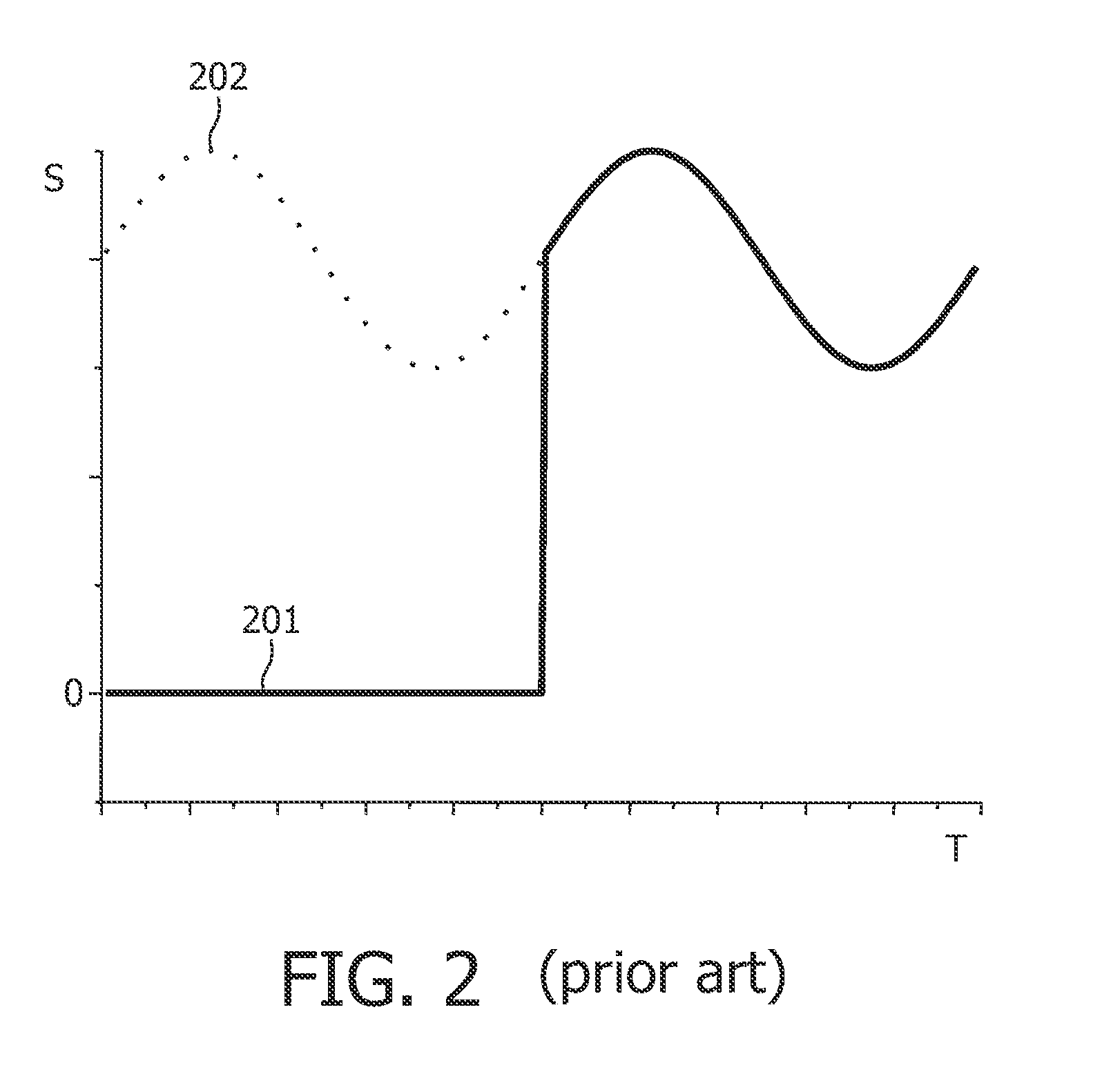Cavity-enhanced photo acoustic trace gas detector with improved feedback loop
- Summary
- Abstract
- Description
- Claims
- Application Information
AI Technical Summary
Benefits of technology
Problems solved by technology
Method used
Image
Examples
Embodiment Construction
[0018]FIG. 1 shows a typical photo acoustic trace gas detector according to the invention. A light source 101 provides a continuous wave laser beam and is modulated into a series of light pulses at a certain ‘chopping’ frequency by, e.g., a chopper 103, shutter or acousto-optic modulator. At higher chopping frequencies (>6 kHz), acousto-optic modulators are preferably used instead of a mechanical chopper. Alternatively, the light source 101 itself may provide the light pulses at a fixed chopping frequency. The light pulses are sent into an optical cavity, which is defined by two semi-transparent mirrors 104a and 104b. An optical isolator 102 is optionally placed between the light source 101 and the input mirror 104a to reduce the back reflectance of light from the cavity mirror 104a into the light source 101. The light pulses enter the optical cavity through input mirror 104a and are reflected many times between the two cavity mirrors 104a and 104b. If the distance between the two m...
PUM
 Login to View More
Login to View More Abstract
Description
Claims
Application Information
 Login to View More
Login to View More - R&D
- Intellectual Property
- Life Sciences
- Materials
- Tech Scout
- Unparalleled Data Quality
- Higher Quality Content
- 60% Fewer Hallucinations
Browse by: Latest US Patents, China's latest patents, Technical Efficacy Thesaurus, Application Domain, Technology Topic, Popular Technical Reports.
© 2025 PatSnap. All rights reserved.Legal|Privacy policy|Modern Slavery Act Transparency Statement|Sitemap|About US| Contact US: help@patsnap.com



